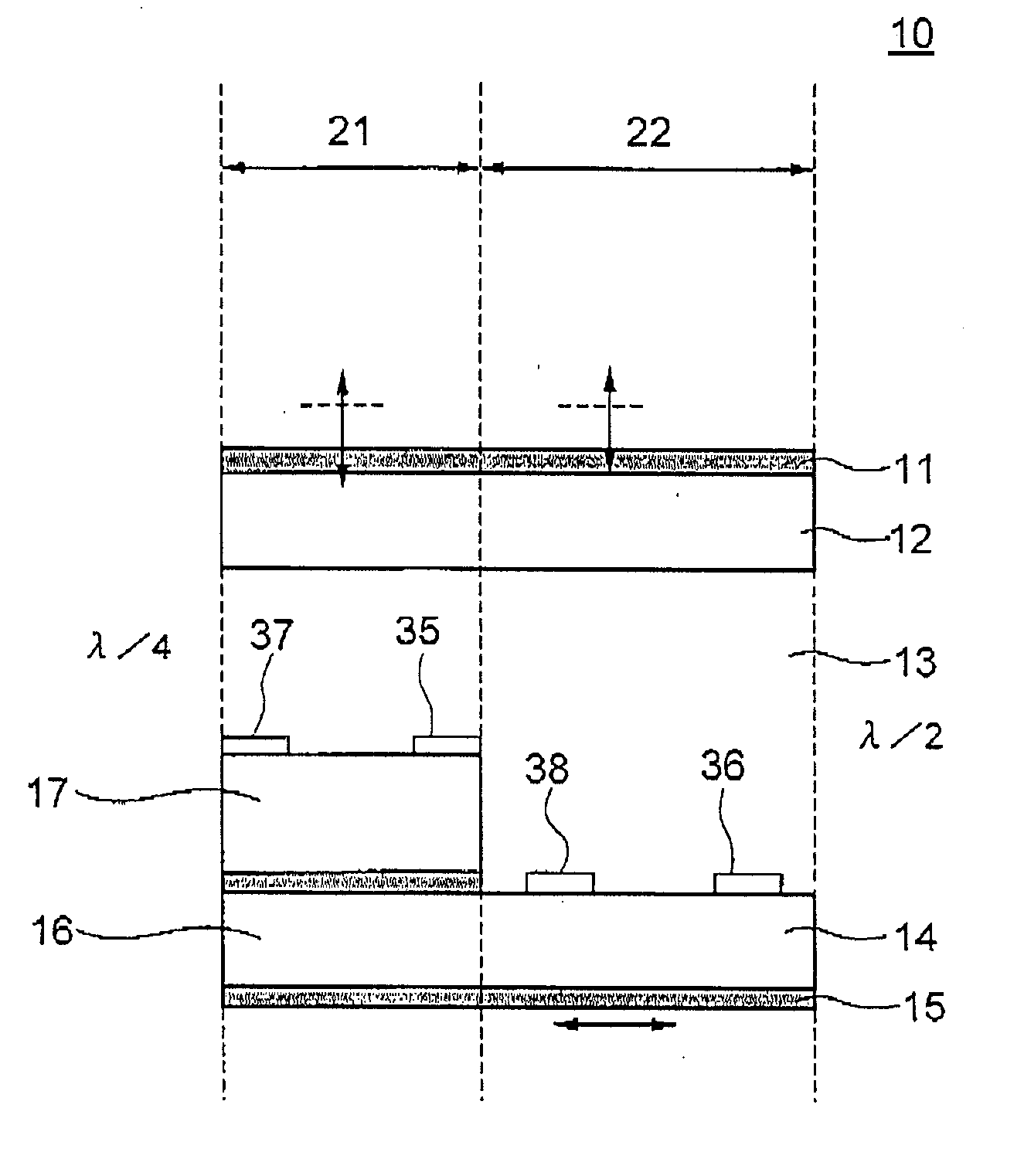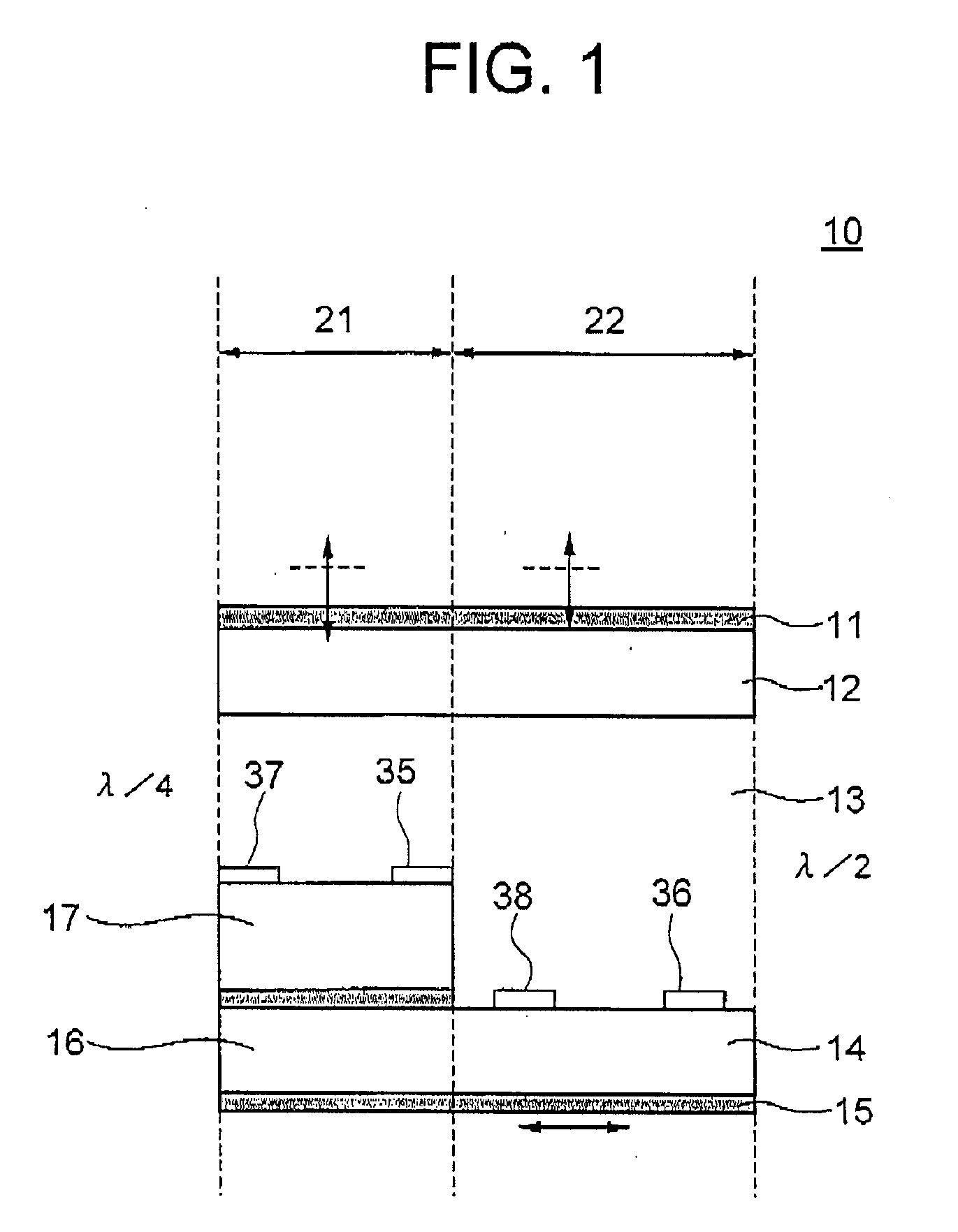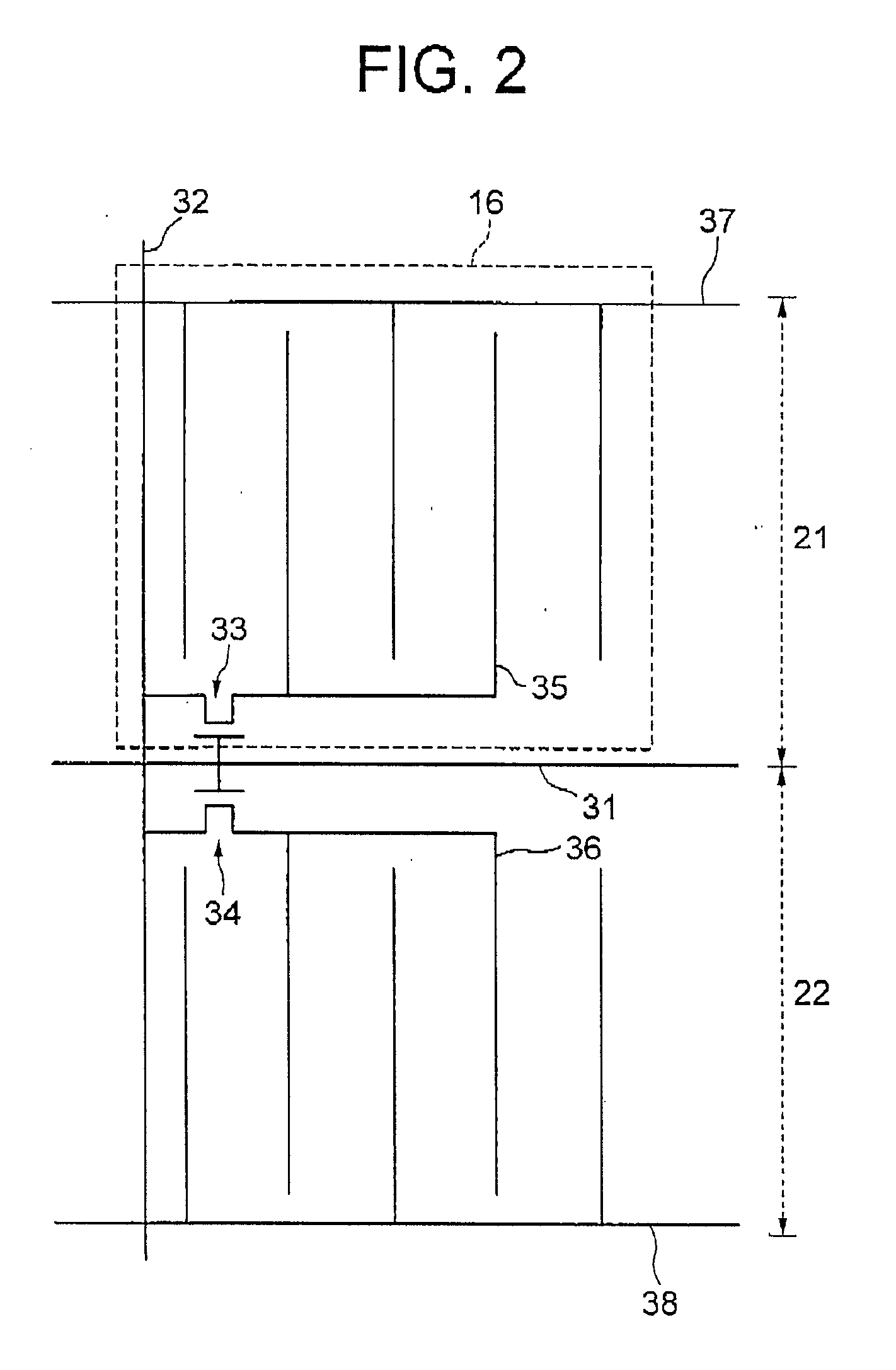Transflective liquid crystal display device
- Summary
- Abstract
- Description
- Claims
- Application Information
AI Technical Summary
Benefits of technology
Problems solved by technology
Method used
Image
Examples
first embodiment
[0071]FIG. 1 is a sectional view schematically showing a pixel in a transflective LCD device according to the present invention. FIG. 2 is a schematic top plan view of the TFT substrate in the pixel shown in FIG. 1. The LCD device, generally designated by numeral 10, includes a first polarizing film 11, counter substrate (first substrate) 12, a LC layer 13, a TFT substrate (second substrate) 14, and a second polarizing film 15, which are arranged in this order from the front side toward the rear side of the LCD device 10. The first polarizing film 11 has a optical transmission axis at 90 degrees, and thus an absorption axis at zero degree, whereas the second polarizing film 15 has an optical transmission axis at zero degree, and thus an absorption axis of 90 degrees. The LC layer 13 includes LC molecules having a longer axis at 90 degrees upon absence of the applied voltage, in this example.
[0072] Each pixel of the LCD device 10 includes a reflective region 21 and a transmissive reg...
second embodiment
[0120] The seventh combination is applied to the LCD device 10c of the second embodiment, which exhibits the polarized state shown in FIG. 21. The function of this LCD device will be described hereinafter during display of a dark state and display of a bright state.
Display of a Dark State
[0121] For display of a dark state in this embodiment, the driving signals shown in FIGS. 3A and 3B are used so as to rotate the longer axis of the LC molecules in the LC layer 13 in the reflective region 21 by 45 degrees, and maintains the longer axis of the LC molecules in the transmissive region 22 at 90 degrees. In FIG. 21, dotted line represents the direction of the polarized light, and the solid arrows represent the optical absorption axis.
[0122] In the transmissive region 22, a 135-degree linearly-polarized light passed by the second polarizing film 15 having an optical transmission axis at 135 degrees (and thus an absorption axis at 45 degrees) is rotated by an angle equal to double the d...
fourth embodiment
[0131] In the above embodiments, IPS-mode LCD device is exemplified as the LCD device of the embodiments. The display mode of the LCD device of the first invention, for example, may be a fringe-field-switching(FFS)-mode instead. FIG. 32 shows a sectional view of the FFS-mode LCD device according to the present invention, The LCD device, generally designated by numeral 10d, includes a reflective region 21 and a transmissive region 22. On the TFT substrate 14a, a reflection film 16 and an embedding insulation film are formed in the reflective region 21. The reflection film 16 reflects the light incident from the first polarizing film 11. The reflection film 16 has an uneven surface in general for improving the light dispersion effect; however, a dispersion film may be additionally provided in the counter substrate 12 instead of providing the uneven surface to the reflection film 16. In a further alternative, a dispersion adhesive layer wherein light dispersion beads are dispersed may ...
PUM
 Login to View More
Login to View More Abstract
Description
Claims
Application Information
 Login to View More
Login to View More - R&D
- Intellectual Property
- Life Sciences
- Materials
- Tech Scout
- Unparalleled Data Quality
- Higher Quality Content
- 60% Fewer Hallucinations
Browse by: Latest US Patents, China's latest patents, Technical Efficacy Thesaurus, Application Domain, Technology Topic, Popular Technical Reports.
© 2025 PatSnap. All rights reserved.Legal|Privacy policy|Modern Slavery Act Transparency Statement|Sitemap|About US| Contact US: help@patsnap.com



